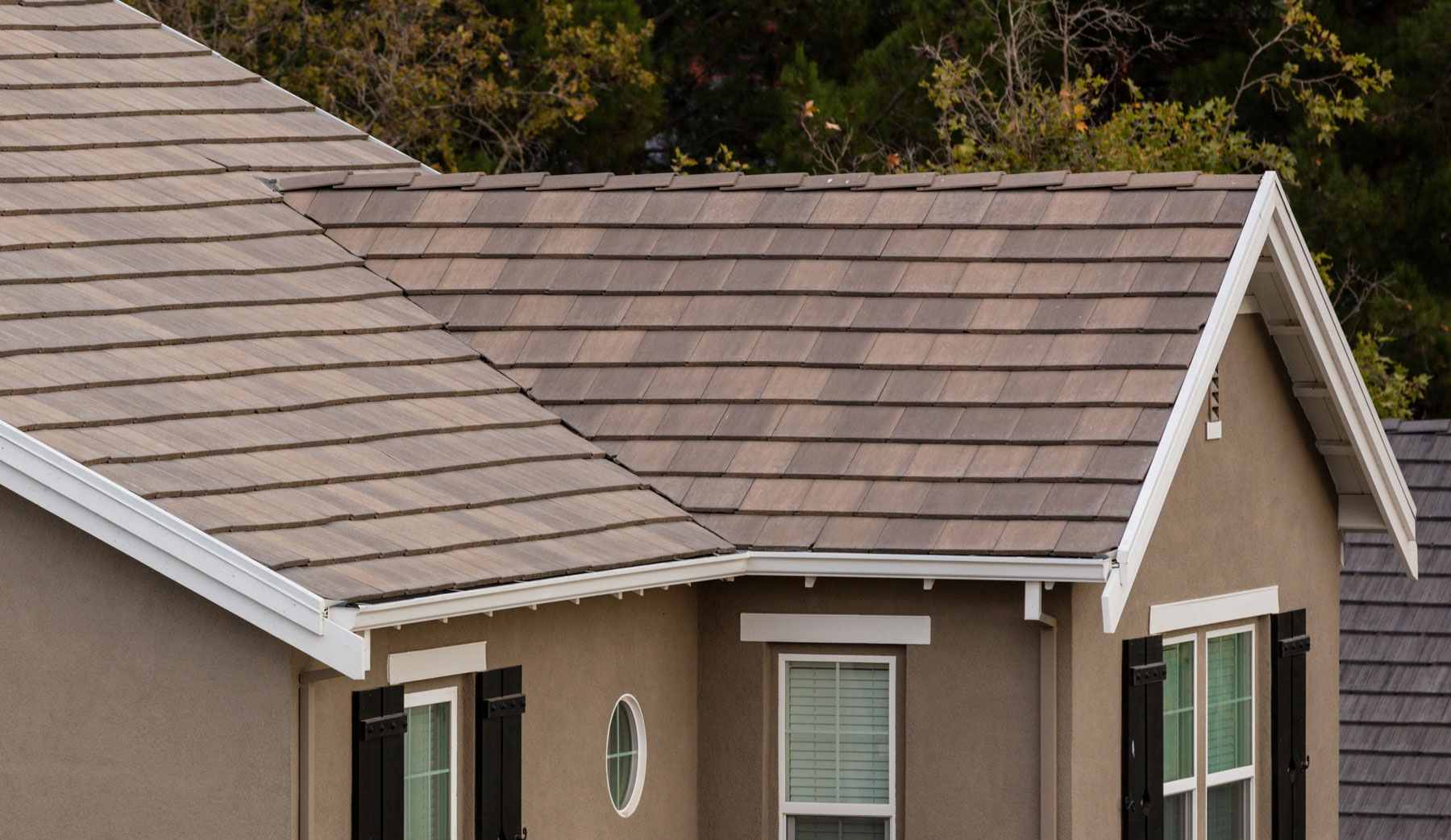Selecting the ideal roof for your home or building involves navigating through various common types, each presenting distinct advantages and considerations. The choices abound, from traditional asphalt shingles’ timeless appeal to metal roofing’s enhanced durability. Whether you lean towards a classic aesthetic or prefer a more modern look, a comprehensive understanding of the unique characteristics of each roof type is crucial for making an informed decision. In this exploration, we’ll delve into some of the most prevalent roof types, guided by insights from a roofing professional, to assist you in identifying the perfect fit for your specific needs.
Asphalt Shingles
As a roofing material, asphalt shingles are renowned for their cost-effectiveness and durability, making them a popular choice. When it comes to advantages, asphalt shingles offer a variety of colors and styles, making them a versatile option for homeowners. They are relatively easy to install, saving time and money during the installation process. Furthermore, asphalt shingles offer commendable fire resistance and can endure challenging weather conditions, including strong winds and heavy rainfall. On the other hand, there are some disadvantages to consider. Asphalt shingles have a shorter lifespan than roofing materials, typically lasting around 20 to 30 years. They may also be prone to damage from hail or extreme temperature fluctuations. Overall, asphalt shingles remain popular due to their affordability and ease of installation.
Metal Roofing
Metal roofing is a highly durable and long-lasting material offering many benefits. Here are four reasons why metal roofing is a popular choice for homeowners:
- Longevity: Metal roofs have an impressive lifespan, often lasting 50 years or more. The extended lifespan minimizes the necessity for frequent roof replacements, resulting in long-term cost savings for homeowners.
- Durability: Metal roofing withstands severe weather conditions, including hail, strong winds, and heavy snowfall. They are also fire-resistant, making them a safer option for homeowners.
- Energy Efficiency: Reflective metal roofs contribute to energy efficiency by keeping homes more relaxed in the summer, reducing energy consumption. This leads to lower utility bills and enhanced indoor comfort.
- Easy Installation: Metal roofs can be installed quickly and efficiently, reducing labor costs. However, hiring experienced professionals for proper installation is essential to avoid potential issues.
While metal roofing has many advantages, it is also essential to consider the disadvantages. These factors encompass elevated initial expenses when juxtaposed with alternative roofing materials and the likelihood of noise disturbances during heavy rain or hailstorms.
Tile Roofs
Tile roofs are popular for homeowners seeking a durable and aesthetically-pleasing roofing option. These roofs offer numerous benefits, making them a practical choice for many. One major advantage of tile roofs is their durability. They can endure challenging weather conditions, including strong winds, intense rainfall, and extreme temperatures. Additionally, tile roofs have a long lifespan, often 50 years or more, with proper maintenance. Another benefit is their fire resistance, providing extra protection for homes. Tile roofs also offer excellent insulation, helping regulate the house’s temperature and reduce energy costs. Moreover, different types of tile materials are available, including clay, concrete, and slate, each with unique characteristics and aesthetic appeal. With their durability, energy efficiency, and various materials, tile roofs are an excellent choice for homeowners.
Wood Shakes
Wood shakes offer a rustic and natural alternative to tile roofs, providing homeowners a charming and timeless roofing option. Here are four benefits of wood shakes:
- Aesthetics: Wood shakes add a warm and inviting look to any home, enhancing its curb appeal and increasing its value.
- Durability: When properly installed and maintained, wood shakes can last for decades, withstanding harsh weather conditions and providing reliable protection against the elements.
- Insulation: Wood shakes have natural insulation properties, helping to regulate temperature and reduce energy consumption, resulting in cost savings on heating and cooling bills.
- Environmentally friendly: Wood shakes are made from a renewable resource and can be recycled, making them an eco-friendly roofing choice.
To ensure the longevity and performance of wood shakes, regular maintenance is necessary. This includes periodic inspections, cleaning, and treatment with preservatives to prevent rot, mold, and insect infestations. With proper care, wood shakes can provide homeowners with a beautiful, sustainable roof option.
Slate Roofing
Slate roofing offers a durable and elegant solution for homeowners seeking a long-lasting and visually appealing roof option. Slate roofs are made from natural stone split into thin sheets and installed on the roof surface. Slate roofing installation requires skilled professionals due to its weight and delicate nature. However, the advantages of slate roofs outweigh the installation challenges:
- Slate is highly durable and can last over a century with proper maintenance. It is resistant to fire, rot, and pests, making it a low-maintenance option.
- Slate roofs provide excellent weather resistance, as they are impervious to water and can withstand extreme temperatures.
- Slate roofing adds a touch of sophistication and timeless beauty to any home, enhancing its curb appeal and value.
